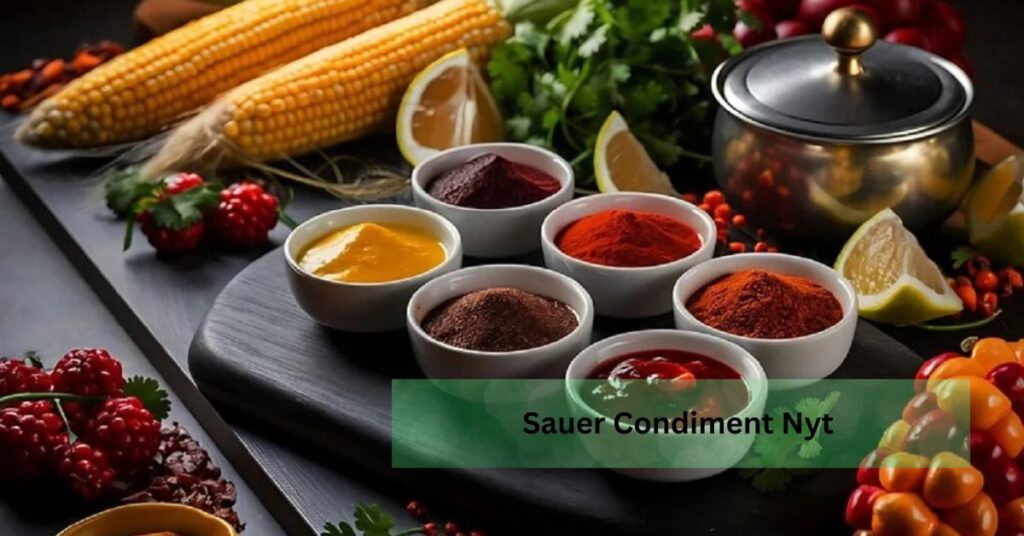Sauerkraut, a staple in traditional German and Eastern European cuisine, is making a remarkable comeback in modern gastronomy. Once seen as a simple condiment, this tangy, fermented cabbage dish is now being reimagined by chefs and food enthusiasts. Its revival is fueled by a blend of health benefits, sustainability, and culinary versatility, making sauerkraut not only a flavorful addition to meals but also a symbol of cultural heritage and innovation.
What is Sauerkraut?
Origins and Cultural Significance
Sauerkraut, which means “sour cabbage” in German, is made by fermenting finely shredded cabbage with lactic acid bacteria. This age-old technique has been used for centuries to preserve food, dating back to ancient China and passing through Europe. Sauerkraut became especially popular in Germany and Eastern Europe as a staple during harsh winters when fresh vegetables were scarce.
Beyond its humble beginnings, sauerkraut has become a cultural icon. It’s a side dish and stars in classic dishes like the Reuben sandwich, bratwursts, and pierogi. The resurgence of sauerkraut in contemporary cuisine reflects a broader shift toward traditional, artisanal foods that emphasize quality and craftsmanship.
Culinary Popularity in NYT Crosswords
Sauerkraut has even found its way into the world of puzzles. Crossword clues like “Sauer condiment” featured in the New York Times engage solvers with culinary knowledge and cultural understanding. These clues connect food with language, providing a fun challenge and an opportunity to explore culinary traditions worldwide.
Health Benefits of Sauerkraut
A Probiotic Powerhouse
One of the critical reasons for sauerkraut’s resurgence is its rich probiotic content. Probiotics, the beneficial bacteria created during fermentation, support gut health. A healthy gut, in turn, boosts the immune system, aids digestion, and improves overall well-being. Sauerkraut is a natural source of these probiotics, making it a popular choice for those looking to enhance their gut health.
Nutritional Benefits
Sauerkraut is also packed with essential vitamins and minerals. It’s rich in vitamin C, an antioxidant that strengthens the immune system, and vitamin K, which is necessary for bone health and blood clotting. Additionally, sauerkraut is a low-calorie food that offers a good amount of dietary fibre, helping to promote digestion and satiety. Iron, another nutrient found in sauerkraut, contributes to healthy blood circulation and energy levels.
Gut Health and Immune Support
The link between gut health and immunity is well-documented. A balanced gut microbiome, supported by probiotics like those in sauerkraut, can reduce inflammation, lower the risk of chronic diseases, and improve overall health. Regular consumption of sauerkraut can help maintain this balance, leading to fewer illnesses and a more robust immune system.
Sauerkraut in Modern Gastronomy
Reinventing Sauerkraut in Contemporary Cuisine
In recent years, sauerkraut has transcended its traditional uses and found its place in modern, innovative dishes. Chefs are embracing sauerkraut’s tangy flavour and experimenting with it in once unimaginable ways. From gourmet tacos to fusion cuisine, sauerkraut is being used to add complexity and depth to a variety of meals.
At high-end restaurants, sauerkraut is being paired with unexpected ingredients such as smoked meats, seafood, and even fruits. It’s being incorporated into salads, tacos, and even pizza in casual cooking. This shift in how sauerkraut is perceived and used demonstrates its versatility and its ability to enhance a wide range of flavours.
A Symbol of the Slow Food Movement
Sauerkraut’s resurgence also aligns with the growing interest in the slow food movement, which emphasizes sustainability, artisanal preparation methods, and the preservation of traditional recipes. By making sauerkraut at home, people are not only reconnecting with age-old culinary practices but also taking control of the quality of their food. This trend reflects a broader cultural shift towards valuing heritage foods and sustainable practices.
The Sustainability Factor
Environmentally Friendly Fermentation
Fermentation is one of the most sustainable food preservation methods available. It requires minimal energy, reduces food waste, and extends the shelf life of perishable items like cabbage. Sauerkraut, made from locally sourced and organic cabbage, supports this sustainable approach to food production. Consumers are increasingly seeking out fermented foods because of their low environmental impact and the reduced need for refrigeration or other energy-intensive storage methods.
Supporting Local Farmers and Producers
The growing demand for sauerkraut and other fermented foods is also benefiting local farmers. By sourcing organic, locally grown cabbage, fermenters can ensure high-quality ingredients while supporting regional agriculture. This local-first approach reduces the carbon footprint associated with food transportation and fosters more robust relationships between consumers and producers, promoting a more sustainable food system overall.
The Role of Fermented Foods in a Circular Economy
In addition to supporting local economies, fermented foods like sauerkraut contribute to the circular economy by encouraging the use of all parts of the cabbage and reducing food waste. Leftover trimmings can be composted, and the fermentation process uses the natural sugars in cabbage to create a nutrient-rich product without the need for additives or preservatives. This efficient use of resources makes sauerkraut an eco-friendly choice for conscious consumers.
How to Make Sauerkraut at Home
Ingredients and Equipment
Making sauerkraut at home is surprisingly simple and requires only a few essential ingredients and tools. You only need fresh cabbage, salt, and a fermentation vessel, such as a glass jar or crock. The process of making sauerkraut involves:
- Shredding the cabbage.
- Mixing it with salt.
- Allowing it to ferment at room temperature for several days to a few weeks.
Step-by-Step Process
- Preparation: Wash and shred the cabbage. Sprinkle salt over it, which helps draw out the water and create the brine needed for fermentation.
- Fermentation: Pack the cabbage tightly into a jar or crock, fully submerging it in liquid. Seal the container and leave it at room temperature to ferment for about a week.
- Tasting and Storing: After a week, taste the sauerkraut. If it’s tangy enough for your liking, transfer it to the refrigerator to slow the fermentation process. If you prefer a more robust flavor, let it ferment for a few more days before storing it in the fridge.
Safety Tips for Fermentation
Ensuring all equipment used in the fermentation process is thoroughly cleaned is essential to avoid contamination. If you notice mould or unusual smells, discard the batch and start over. Proper cleanliness and storage are crucial to making safe and delicious sauerkraut.
The Future of Fermented Foods
Emerging Trends in Fermented Condiments
The future of sauerkraut and other fermented foods looks promising, with innovations such as flavoured sauerkraut and ready-to-eat fermented snacks gaining popularity. Flavoured versions, like kimchi-infused sauerkraut or spicy garlic varieties, are attracting adventurous eaters and expanding the market for fermented condiments. These products are convenient and appeal to many consumers interested in global flavours and health-conscious eating.
Sustainability and Innovation
As sustainability drives consumer choices, fermented foods are recognized for their minimal environmental impact and health benefits. Fermented condiments are no longer niche products but are becoming mainstream, with chefs and food companies experimenting with new ways to incorporate these tangy, probiotic-rich foods into everyday meals. The combination of sustainability, innovation, and tradition ensures that fermented foods like sauerkraut will remain a staple in both home kitchens and professional kitchens for years to come.
The Global Culinary Revolution
From sauerkraut-infused cocktails to kimchi-topped pizzas, the culinary world is brimming with creativity regarding fermented foods. These innovations showcase the versatility and potential of sauerkraut as a key ingredient in dishes that span a wide range of cuisines. As more people embrace the health benefits and flavours of fermented foods, sauerkraut’s role in modern gastronomy will continue to evolve.
FAQs
How Long Does Homemade Sauerkraut Last?
Homemade sauerkraut can last for several months when stored properly in the refrigerator, as the fermentation process preserves the cabbage.
Can I Use Other Vegetables For Fermentation Like Sauerkraut?
Yes, you can ferment other vegetables like carrots, beets, or radishes using a similar process to make sauerkraut.
Is Sauerkraut Gluten-Free?
Sauerkraut is naturally gluten-free, as it is made from cabbage and salt, making it a safe option for those with gluten sensitivities.
How Does Sauerkraut Compare To Other Fermented Foods?
Sauerkraut is similar to kimchi and pickles in its fermentation process, but it has a unique flavour profile and is often less spicy than kimchi.
Can I Freeze Sauerkraut?
Freezing sauerkraut is possible, but it may alter the texture. It’s best to refrigerate it to maintain its crunch and flavour.
Conclusion
Sauerkraut’s rise in popularity is a testament to the power of tradition, innovation, and sustainability in shaping modern food culture. Whether you’re looking to boost your gut health, explore new culinary flavours, or support environmentally friendly practices, sauerkraut offers a versatile and nutritious solution. Its resurgence reflects a broader cultural shift towards appreciating artisanal foods and time-honoured preparation methods. So, why not try making your sauerkraut at home or experiment with incorporating it into your favourite dishes? The possibilities are endless.
Read more:


